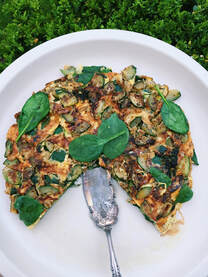1. The study behind the report didn't limit its observation to actual egg consumption, but rather “ingredients in mixed dishes.” This includes cookies, cakes, and ice cream. Seriously?! Come on now.
2. It was an observational study. Observation does not equal causation. It doesn't account for chance, poor data collection, ignoring other foods consumed, and conflicts of interest. Who's behind the study? It turns out many of the researchers have connections to the pharmaceutical industry, including companies that make statins – drugs heavily prescribed for high cholesterol and cardiovascular disease.
3. In 2016, after many years of controlled research on eggs that showed no relationship between the amount of cholesterol we eat and the risk of heart disease, the U.S. actually reversed its guidelines on dietary cholesterol in 2016, removing any limitation. These studies have shown that our bodies are pretty brilliant when it comes to eating cholesterol, with a rise in good cholesterol to maintain a healthy balance. See one report here.
4. Cardiovascular health is determined by other dietary factors including what else we are eating besides saturated fats such as fiber and polyunsaturated fats. See report on this correlation here.
5. In 25% of us, while eating eggs modestly increases both LDL and HDL cholesterol, it doesn’t increase the risk of heart disease. But for a very small subset of people who are genetically predetermined to be sensitive to cholesterol intake, reducing dietary cholesterol might be a good thing.
Oh, and by the way, that recent, flawed observational study found that the risk from eating eggs is a ridiculously low 2 cardiovascular events in 1,000 person-years!
The bottom line: Enjoy your eggs, which are abundant in vitamins, minerals and protein, and get your cholesterol checked when you see your doctor. To calculate risk: current medical thinking points to your non-HDL cholesterol (LDL) as being the important number as well as your triglyceride level. See here and here to learn more.

Veggie Frittata
My good friend Dorothea is Italian. Her family is from Sestri Levante, a town in Liguria where they make these beautiful, thin delicacies. She taught me how to make frittatas this way.
Excerpted from my book, Gutsy: The Food Mood Method to Revitalize Your Health Beyond Conventional Medicine. Get the book with 56 additional recipes free of the most common food triggers here.
Serves 2
Print Recipe
3 T olive oil, divided
1/4 yellow onion, chopped
2 c fresh spinach leaves or 1 1/2 cups zucchini, chopped into
small cubes
2 T fresh basil or cilantro, chopped
2 eggs
Pinch salt and freshly ground pepper
Warm 1 tablespoon of the olive oil over medium heat in an 11” sauté pan, Add the onion and sauté until it begins to turn golden brown, about 5 minutes. Add onion and spinach or zucchini. Continue cooking, stirring, until wilted. If using zucchini, cook until soft, about 5 minutes. Turn off heat. Add herbs and stir.
In a small bowl, beat eggs. Add salt and pepper and stir. Stir the cooked veggies into the bowl of eggs and mix well until combined. Pour the remaining 2 tablespoons of the olive oil into the sauté pan and warm over medium-low heat, spreading to coat pan. Add egg mixture to pan and spread out thinly. Cook until edges become golden brown, about 5 minutes.
Using a round plate, cover frittata in pan. Carefully turn pan over to release the eggs onto the plate. The browned side should now be face up on plate. Slide frittata back into pan, uncooked side down. Continue cooking another 5 minutes. Serve immediately or at room temperature.
